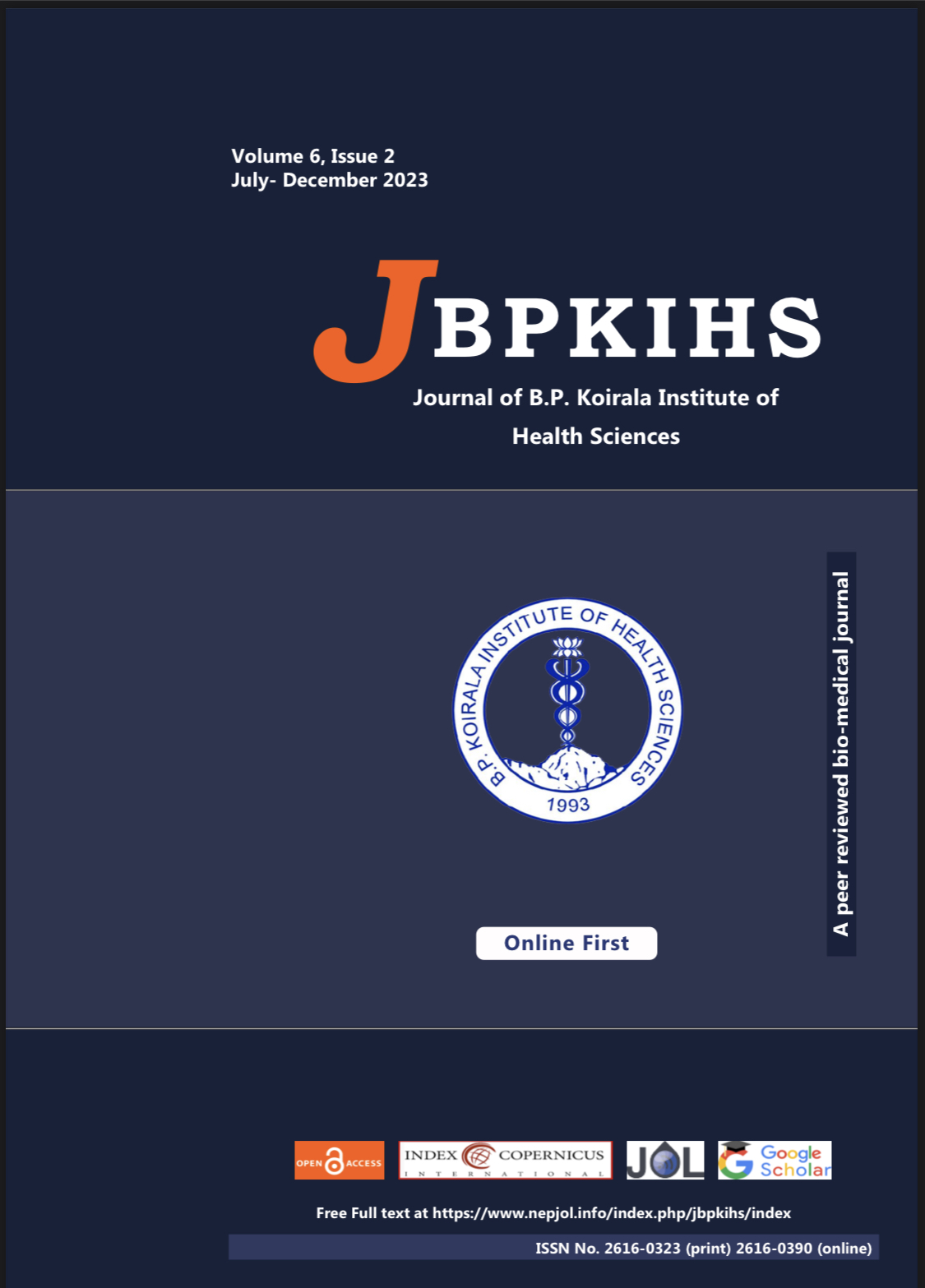Prevalence of Tumor Budding and its Significance for Predicting Lymph Node Metastasis in Carcinomas at Tertiary Care Center
DOI:
https://doi.org/10.3126/jbpkihs.v6i2.57704Keywords:
Neoplasm invasiveness, Lymphatic metastasis, Lymph nodes, PrognosisAbstract
Background: “Tumor budding” basically means the presence of clusters of less than 5 malignant cells in the tumor stroma, located ahead of the invasive front of tumor. Various studies have been carried out regarding tumor budding, its significance in tumor metastasis involving head and neck, breast, gastrointestinal tract, pancreas and cervix and is now evolving in cancer reporting templates. We conducted this study in regards to growing importance of tumor budding in cancer metastasis with objectives to find out the prevalence of tumor budding in carcinoma and to know the association of tumor budding with lymph node, perineural and lymphovascular invasion.
Methods: All the resected specimen with regional lymph node were examined for presence or absence of tumor buds. It was graded as high/ low grade based on the number of buds. Association of the tumor buds with lymph node metastasis, lymphovascular and perineural invasion was calculated. The study was conducted from January 2019 to January 2020. Purposive sampling was used. Ethical clearance was ensured from the institutional review board before the start of study (IRC 1322/ 018). All surgically resected specimen of carcinomas with regional lymph nodes were included in the study whereas autolysed specimen and patient who refused to give consent were excluded from the study.
Result: Total 37 cases of resected specimens of gastrointestinal tract, breast, head and neck were evaluated. The prevalence of tumor budding was 91.9%. In every instance where tumor budding existed, there was an observation of high-grade tumor bud. Tumor budding was strongly associated with lymph node invasion (p = 0.005). Significant value was not observed in the correlation of tumor budding with lymphovascular and perineural invasion.
Conclusion: Tumor budding holds an important role in predicting lymph node metastasis in carcinomas, highlighting its importance in the histopathological reports of resected specimen.
Downloads
Downloads
Published
How to Cite
Issue
Section
License
Copyright (c) 2023 Journal of BP Koirala Institute of Health Sciences

This work is licensed under a Creative Commons Attribution-NonCommercial-NoDerivatives 4.0 International License.
This license enables reusers to copy and distribute the material in any medium or format in unadapted form only, for noncommercial purposes only, and only so long as attribution is given to the creator.




